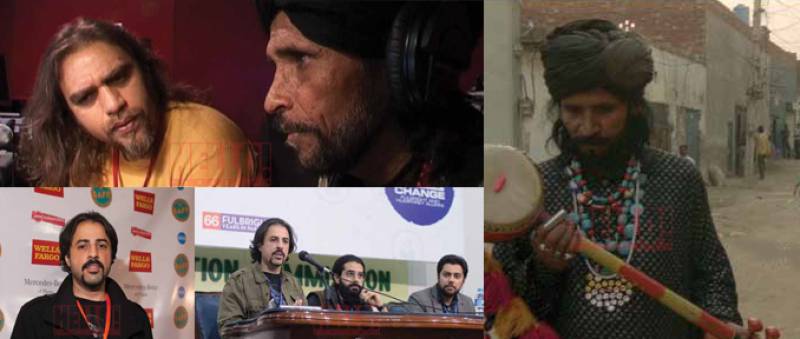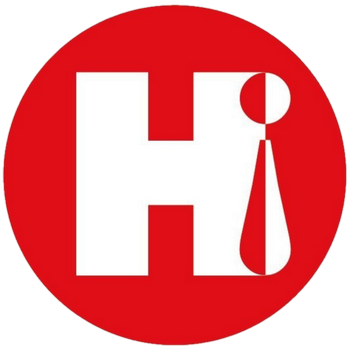Chronicling The Coke Studio Journey Mian Adnan Ahmad On Putting Pakistan’s Definitive Music History On Film As Well As His First Film 'HEAL'

How did your filmmaking journey begin? Was this your passion and how did it translate into your profession?
My family, across the generations, love film – from my granddad, to my dad, to my elder brother. I was exposed to all kinds of cinema from a young age, especially when I saw Back To The Future. I convinced my brother to teach me how to use our father’s VHS camera – I shot home videos, had fun dubbing them with music and made other films with my own dialogues. At the same time, visual effects also interested me and I wanted to replicate an effect in which people magically disappear and reappear on screen. Did a lot of playing around with that concept as I was growing up! I went on to study Information Systems, did an internship with an ad agency, worked for a while with a local TV channel and made a couple short films on my own, including a documentary on the 2005 earthquake. Eventually, I applied for the Fulbright Scholarship to pursue an MFA in Film and once I got the scholarship, there was no looking back.
How did the film 'Coke Studio – The Journey Within' come about? How long did it take from conception to completion?
I came across Coke Studio in its second year while in film school and was impressed by how it presented our culture and music to a more mainstream audience. There was a lot of reflection about our identity and who we were, not just musically but also spiritually. This stayed with me and when an opportunity was presented to make a feature docufilm about the origins of Coke Studio, I wanted to convey this feeling in the film as well.
Who is your primary audience? How do you want Pakistan to be perceived internally and abroad?
I consider myself as part of the audience, so I want to make a film that I would like to see myself. If it doesn’t interest me then it would be difficult for me to convince others to sit through it. I want Pakistan to be perceived for what it is – both the good and the bad need to be portrayed in honesty and balance.
Your films have done a round of film festivals in the USA, Europe and South Asia. Share some of the highlights of this experience?
The best part has been being able to share our stories with others and connecting at a human level through the experiences we all share in some way or form. When HEAL came out, it was received extremely well, winning on more than 20 occasions, likely being the most awarded film from Pakistan to date. It is a fictional short with a supernatural element to the story so it was great to see it being appreciated for that aspect; as well when it won at Comic-Con in 2011; apart from being honoured with the Frank Capra Award at Fallbrook the same year. Similarly The Journey Within has provided much-needed insight into the musical fabric of our country via the origin story of Coke Studio while also helping break the stereotypes. The film premiered in the US at the Full Bloom Film Festival to a local audience, who had never heard of the show, but were so affected by the story, characters and music that the festival presented it with its highest honour, the ‘Best of the Fest’ award. The film has also screened at the prestigious Noise Pop Film Series for music in San Francisco apart from being celebrated for its story amongst fans of the show living in South Asia and abroad. A major accomplishment was to be chosen as part of Traveling Film Southasia, a selection of films from Film Southasia recognised as the best of this region, and to be screened at the Seattle South Asian Film Festival and DFW South Asian Film Festival in the USA.
When did you make your fictional short 'HEAL'? Did you write the script, where was it filmed and how did you cast it?
HEAL was completed in 2010 followed by a festival run which has, remarkably, lasted up to 2016. I wrote the script while studying at Chapman University in the US and filmed it as part of our final year thesis project. Casting was a major challenge as we had to find children of a young age who were based in the US, who could speak their native language and act. By reaching out to the Pak/Afghan communities we were very lucky to find our child leads Ameer Zhowandai (Azeem) and Hannah Sher (Amal). Other pivotal roles were played by well-known Navid Negahban (Kaka Abdul) – who has been part of numerous acclaimed TV shows and films in Hollywood – and Afghan- American actress Fereshta Kazemi (Noor Jan). Key crew members who made HEAL possible included Marcus Metsala (Producer), Dani Sanchez-Lopez (Cinematographer) and Yukako Shimada (Editor) amongst others.
What inspired the story of 'HEAL'? And what motivated you tell a story based in Afghanistan?
During my film school days I was torn between telling a supernatural story about a character with a special gift and highlighting the ongoing conflict in Afghanistan. I had previously also been exposed to the earthquake that hit Pakistan in 2005 while interviewing various children at relief camps and shelters. In retrospect, the aftermath of war has a similar if not more brutal effect on children and that experience led to a crucial part of the narrative for HEAL which tells the story of a boy with a special gift living in a place of conflict. The Journey Within focuses on Rohail Hyatt’s technical production of 'Coke Studio' and behind the scenes footage.
Are you the only filmmaker who captured the process? Tell us more?
All the BTS footage was shot by Rohail’s team at Frequency Media at the time – and they shot a lot! Which was great, but also became a daunting task to skim through all the footage – we’re talking six years of footage. So a lot of notes had to be made, literally over a 100 pages for each and every moment, minute by minute to be in a better position to decipher and select what we needed for the story. We were also responsible for shooting all the visuals and interviews for the film and it was a blessing to have Dani for the cinematography. The scale was huge and other key members included Yukako Shimada (Editor), Saad Khan /Adeel Babree (Sound), Adil Hashmi / Nasir Mehmood / Juan Carlos Diaz (Production) and Mian Nauman Ahmad Kakakhel (Technical Lead)
What moved you most about filming the 'Coke Studio' process? How is it a unique platform in your eyes? What did Rohail bring to it that was original?
It was a privilege to learn about and experience the song-making process in its entirety, especially of the qawwals and folk artists. Some of the most aweinspiring moments came from the jam sessions the house band had with these artists. Meeting them and other icons of the music industry was a learning experience in itself, especially Saieen Zahoor. Some of them also performed for us when we met. Rohail and his team conducted extensive research on how to make both eastern and western music work together, going to great depths to get the right feel for a song. A lot of technological advancements were being made – which was not the norm back then – and also covering minute details of the overall presentation of the finished product each year to make it worth experiencing, both as listener and viewer. It also became the norm to take completely unknown artists (who had what it takes) and put them straight into the mainstream.
Who are your filmmaking heroes? Is there someone who sets the ultimate benchmark for you?
It’s always tough to choose; everyone has something to offer. A name that stands out for me personally is Terrence Malick, particularly his earlier films. Growing up, I was inspired by Steven Spielberg and Robert Zemeckis. People I usually go back to include Bahman Ghobadi, Michael Mann, Michel Gondry, Alfonso Cuarón, Alejandro González Iñárritu, Charlie Kaufman, Quentin Tarantino, Spike Lee, Cameron Crowe, Martin McDonagh among others.
What are you working on next? What are some of the stories you can’t wait to share with viewers?
There are many stories out there but it’s not always easy to choose and to find what you’re really searching for. Usually I don’t reveal too much about what’s happening in the present but I know that I would want to make something on cricket and adapt HEAL into a feature. Regarding other possibilities all will be revealed in due time.
Mian Adnan Ahmed tells us that the H! Pakistan interview actually made him look back and reflect on the festival experience and he put together a video of the highlights of his festival experience to share on this forum.
Photo Credits: Courtesy Mian Adnan Ahmad
- Tags: cinema, Coke Studio, Coke Studio Journey, film, HEAL, History, Mian Adnan Ahmad, movie, music
